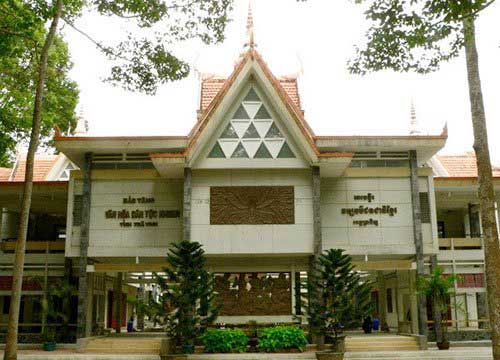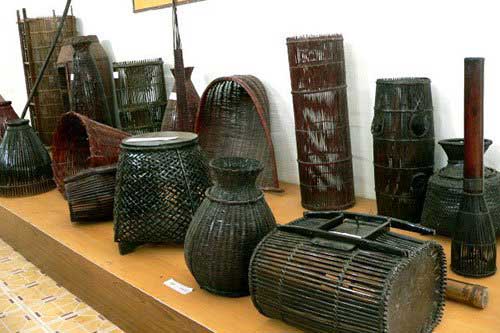|
Visiting Khmer culture museum in Tra Vinh
Tra Vinh is
prided as a green city with many large seasoned trees bringing a peaceful and
shady atmosphere for visitors.
Along with some popular destinations
such as Ba Dong Beach, Ba Om Pond Tourist Area and many Khmer pagodas,
The museum, built in 1995, is home to
many artifacts and documents featuring the culture, materials and spiritual
life of Khmer people in the Mekong Delta. The museum boasts spacious and
large surroundings with many flowers and ornamental trees.
The museum has architecture mixed in
harmony of tradition and modern décor. The first display area will feature
replicas of many famous Khmer pagodas.
To the area, visitors seem to enter a
world which arouses imagination and romance via artworks made by talented
hands of artisans.
The highlights of the area are
statues of genie bird named Key-no and bird-human Pro-nam which are often
used to decorate Khmer pagodas.
The second area displays traditional
farming tools such as fishing traps and weaving looms made of varied
materials from bamboo, wood, brocade and coconut shells.
Despite being farming tools,
artifacts prove the dexterity and talents of Khmer people. The sickles for
cutting rice are carved with genie birds or snakes and dragons and most tools
have elegantly and meticulously carved patterns.
The area also exhibits traditional
costumes of Khmer people as well as the written language system and its
development. Tourists will also have a chance to enjoy a fashion show.
The third area is for traditional
musical instruments and masks and costumes for actors. Artifacts reproduce
two genres of theater arts of Khmer people, including Ro-bam originated from
royal dance and Du-ke folk singing.
Source: SGT
|
Thứ Bảy, 31 tháng 8, 2013
Đăng ký:
Đăng Nhận xét (Atom)


Không có nhận xét nào:
Đăng nhận xét